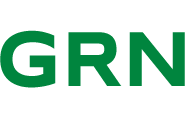This summer, EMEC carried out a series of drifting acoustic surveys to measure the underwater soundscape around Orbital Marine Power's O2 tidal turbine. The O2 has been operating at EMEC's Fall of Warness tidal energy site since 2021.
The surveys were conducted as part of the FORWARD2030 project, supported by the European Union's Horizon 2020 research and innovation programme.
In this article, our Environmental Coordinator, Millie Green, offers a fascinating behind-the-scenes look at how we're monitoring underwater noise at our test sites.
Drifting acoustic surveys were carried out by EMEC throughout July and August 2025 to better understand the noise generated by tidal turbines underwater.
Why monitor underwater sound?
As marine animals use underwater sound to communicate, navigate and find food, acoustic surveys are a vital part of assessing the environmental impact of tidal energy devices. Since the ocean energy sector is still emerging, measuring the noise produced by these technologies helps EMEC, developers and regulators understand potential effects on marine life and identify appropriate mitigations. This evidence-based approach supports more informed decision-making and can streamline future permitting by improving regulatory confidence in the sector's environmental performance.
How does EMEC monitor underwater sound?
The set up involved deploying SoundTrap hydrophones - underwater audio recorders - encased in drogues and suspended around 5 meters below the surface. Each hydrophone is tethered to a buoy, which in turn is linked to a separate float equipped with a flag, light and GPS tracker. This set up ensures visibility, accurate location data and easy retrieval.
Thanks to Brian Polagye, Chirstopher Bassett and their team at the University of Washington, USA, who guided our monitoring solution with their DAISY design and provided feedback on our plans.
During deployment, our vessel's engine and sonar are switched off to prevent interference, allowing the hydrophones to drift naturally with the tide and capture acoustic data.
Why use drifting surveys?
We follow international standards (IEC TS 62600-40:2019) for acoustic monitoring of marine energy converters. In high-flow tidal sites like the Fall of Warness, placing a hydrophone in a stationary position (e.g. on the seabed) can result in recordings dominated by the sound of water rushing past the sensor. By allowing the hydrophone to drift with the tide, we reduce some of this noise and get a clearer picture of the turbine's acoustic output.
Acoustic surveys in action - summer 2025
We began with a set of control surveys. These took place in Westray South, northeast of EMEC's Fall of Warness tidal test site, during spring tides. We recorded underwater noise in a similar tidal environment to our test site, but without an operational tidal turbine in the vicinity. The hydrophones were left to drift over 1000 meters each time, on the flood tide.
With our baseline data in place, we then teamed up with colleagues from Orbital Marine Power for two days of surveys around the O2 tidal turbine, again on the flood tides during spring tides.
The first day focused on acoustics along the port side of the O2, followed by surveys downstream of the device on day two. We completed 45 drifts in total, most lasting around 3 minutes although some were allowed to drift a little longer. On the final four drifts we trialled the use of two drifting hydrophones at the same time to help more accurately locate where sound is coming from.
Next steps
The data collected is now being processed, with onsite observation notes digitised and sound recordings being cut based on GPS positioning. This will feed into a report on the turbine's acoustic profile.
This work exemplifies EMEC's commitment to supporting developers with robust environmental monitoring. By generating high-quality acoustic data, we help developers and regulators build a clearer understanding of how marine energy technologies interact with their surroundings, ensuring the sustainable development of this emerging sector.









